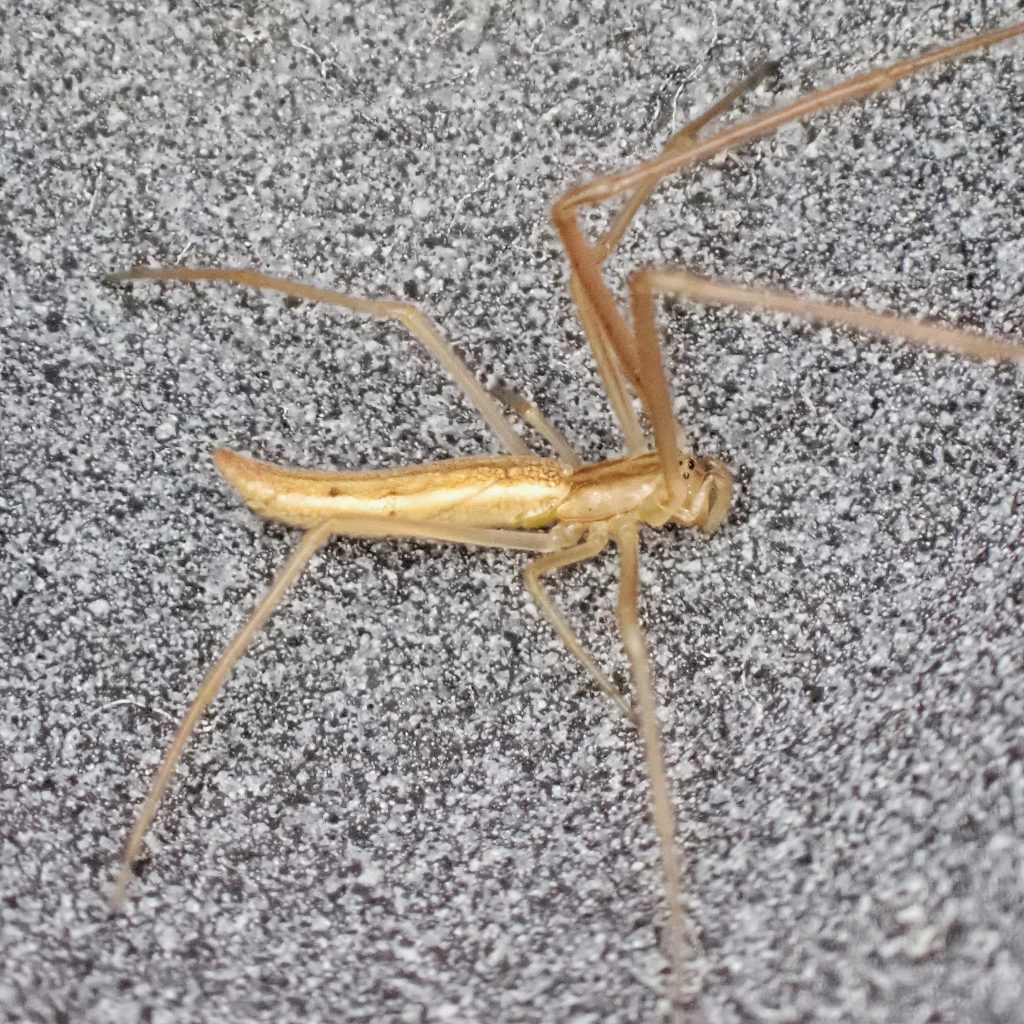
It was really kind of an accident that I identified these three handsome but immature specimens of long jawed orbweavers (Tetragnathidae) that I found while sweep netting some grass, reeds, and low brush alongside a lake. I was just trying to confirm my suspicion that they were something in the genus Tetragnatha, and to familiarize myself with Levi’s key, when I realized that the abdominal extension past the spinnerets meant that it had to be Tetragnatha caudata, because the only other Tetragnatha spp. with that trait don’t occur in the PNW. Managing to accidentally make a positive identification of an immature spider is just not something that is going to happen very often! And it may be the only female Tetragnatha sp. that I ever do positively identify, because genitalic dissection appears to be required for the other female members of the genus, and that is beyond my capabilities.
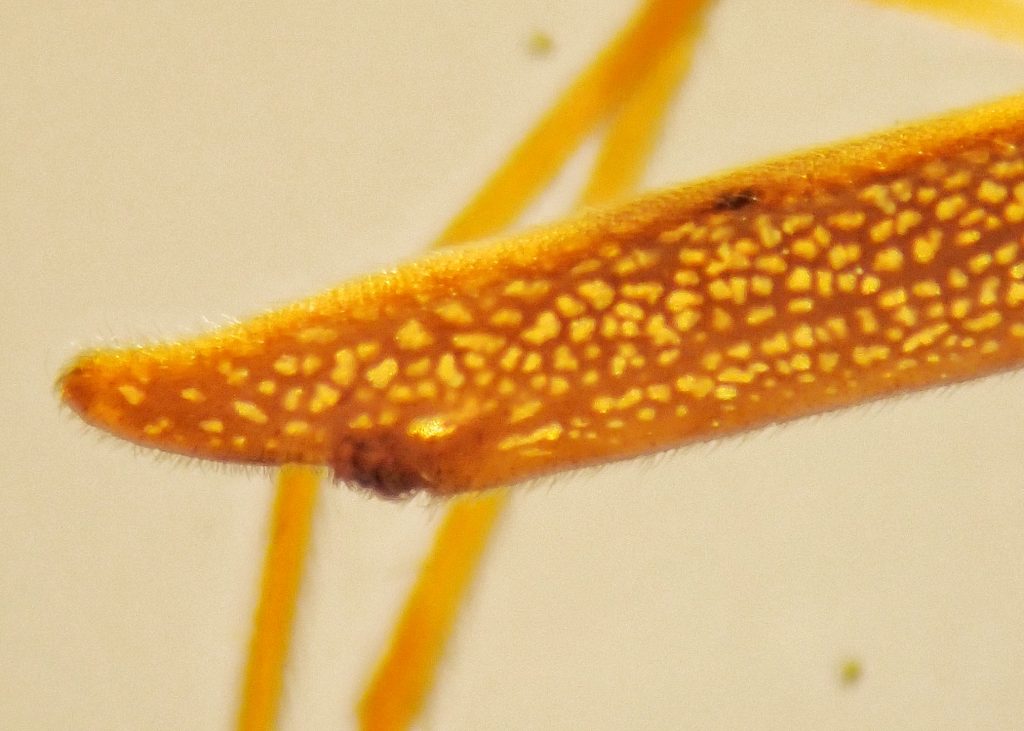
Description– Small (females 7.6- 11.5mm; males 5.7-8.9mm) yellow brown spiders with long legs that are often stretched out in front of and behind the spider; usually has goldish white patches along the sides of the abdomen, and a dark line in the center; the posterior lateral eyes are farther from the anterior lateral eyes than the posterior median eyes are from the anterior median eyes.
Similar species– No other Tetragnatha in our region have the abdomen extending well past the spinnerets.
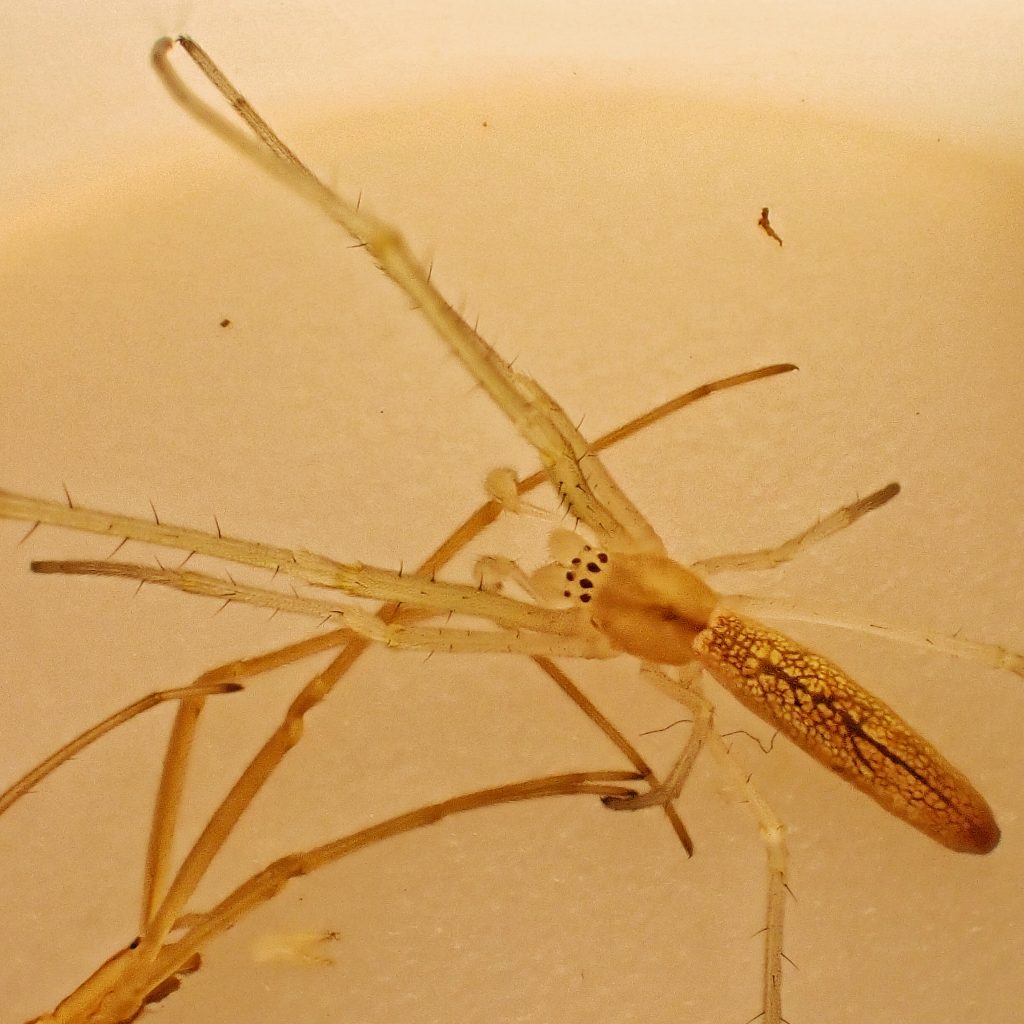
Range– “According to the World Spider Catalog (2020), this species can be found in North and Central America, besides Cuba and Jamaica in the Caribbean. Here we add the first records from South America, all for its southeastern area in the province of Buenos Aires (Argentina) and the department of Rocha (Uruguay).” https://wsc.nmbe.ch/pdfdownload/ec5c3d49486f838bb565f3bcf6333973AKvpF5rIUf9r9CW; in the PNW it seems to be found more often west of the Cascades in, but that may just be a collection/observation bias, or the fact that they are difficult to identify from a dorsal habitus photo.
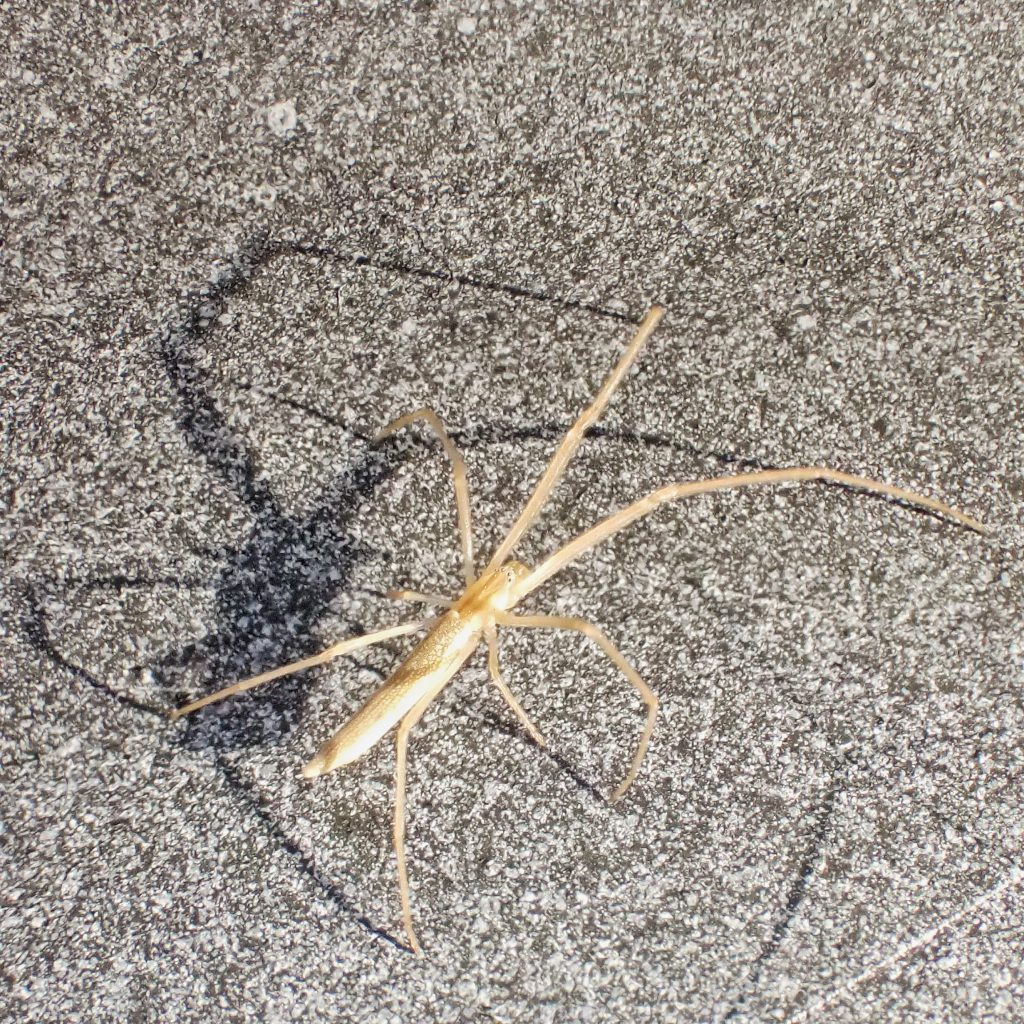
Habitat– “ The usual habitats for T. caudata are bogs, marshes, and swamps where the webs are suspended among reeds and tall grasses.” https://wsc.nmbe.ch/pdfdownload/f5bae2e6150b59ac688355210a3bf7d0iSqZbh82SlmEQaB
Eats– Mostly small dipterids like flies, midges, and mosquitoes.
Eaten by– Probably insectivores of all classes.
Adults active– Probably mid- spring into early summer.
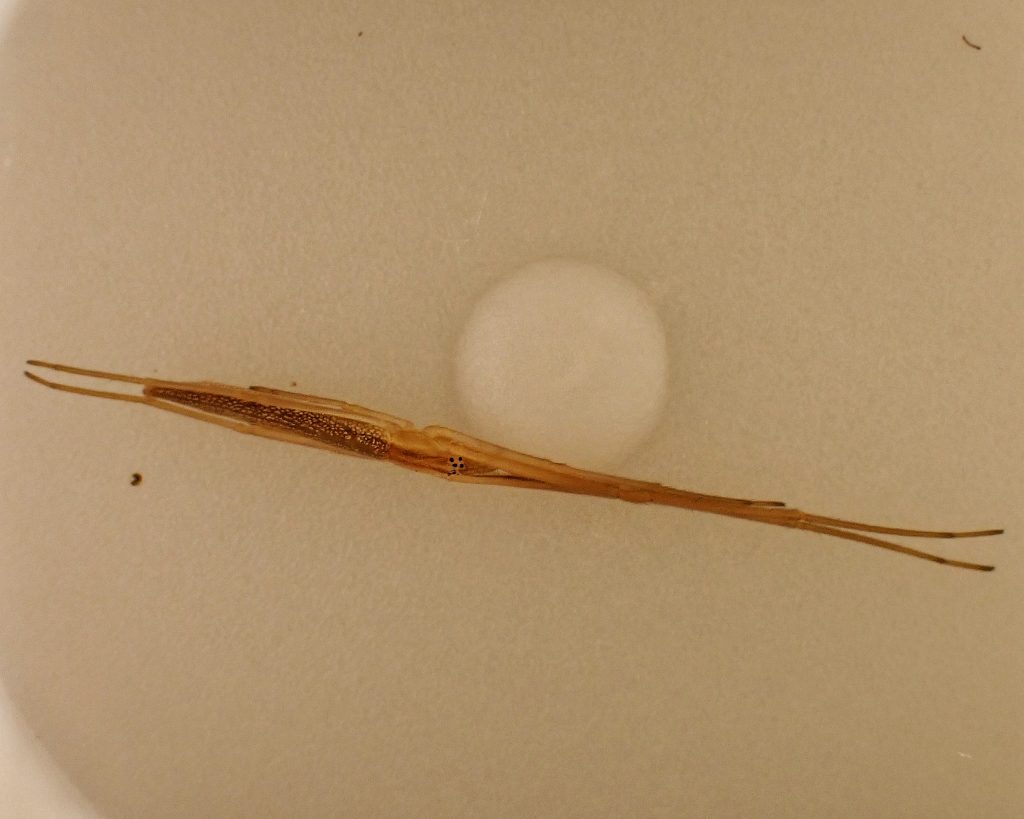
Life cycle– I can find nothing specific to this species, so this quote from Levi refers to Tetragnathain general- “There is no obvious courtship. The male grasps the female’s chelicerae with his fangs (Plate 4); the coupling is apparently so secure that no holdfast organ is necessary adjoining the copulatory opening (epigynum). Perhaps this is the circumstance that has pemiitted the loss of the epigynum. The female may coil her abdomen while mating. Palpi are alternated, as in most entelegyne spiders. Unlike most other Araneidae, the male does not court between the use of left and right palpi. Like haplogyne spiders and Palpimanidae, males may use both palpi together in sperm induction. A week after mating, the female may produce several egg-sacs, fluffy structures broadly attached to vegetation. The young hatch soon thereafter and overwinter in immature stages.” https://www.biodiversitylibrary.org/partpdf/33808
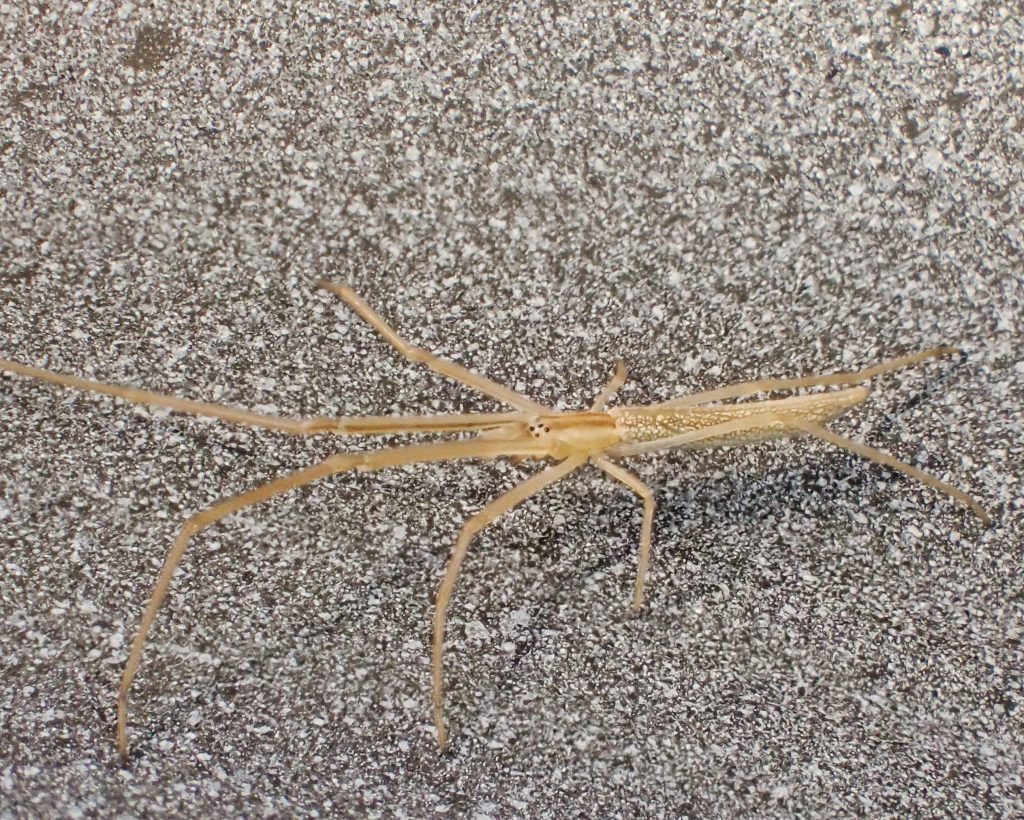
Etymology of names– Tetragnatha is from the Greek words for ‘4 jawed’, and was used by Aristotle in Ancient Greece, and later by the Roman Pliny, to describe an unidentified poisonous spider, which Latreille finally applied to these decidedly non-medically significant spiders. The specific epithet caudata is from the Latin word for ‘with tail’, which alludes to the abdomen extending past the spinnerets like a tail.
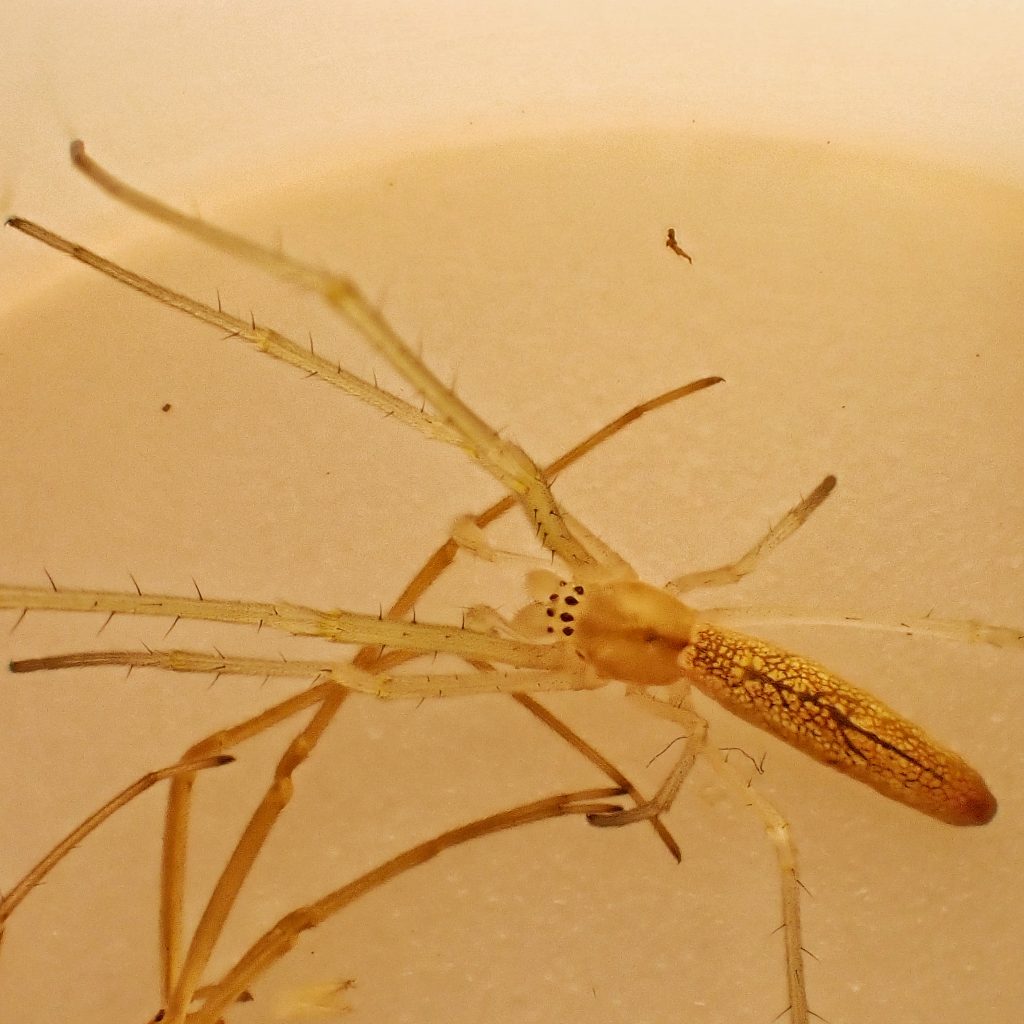
Species Tetragnatha caudata – BugGuide.Net
https://wsc.nmbe.ch/pdfdownload/f5bae2e6150b59ac688355210a3bf7d0iSqZbh82SlmEQaB
https://www.inaturalist.org/taxa/47550-Tetragnatha
Long, cryptic spiders | spiderbytes
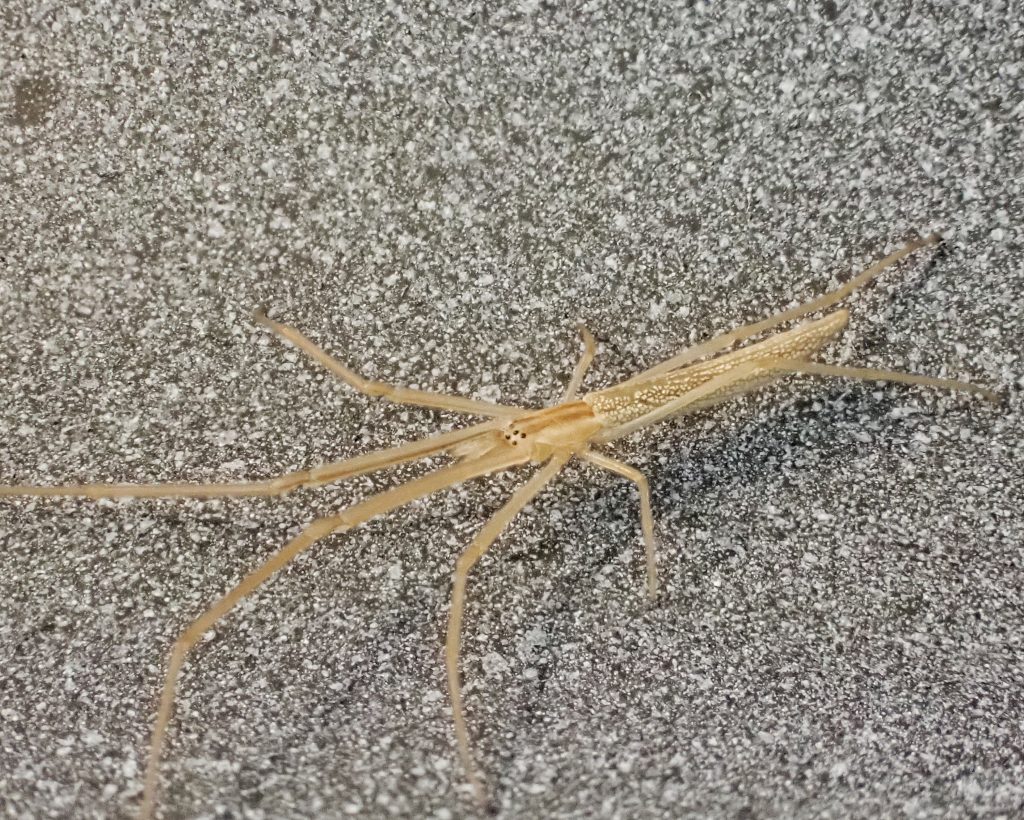
I had noi ideas spiders were so incredibly diverse. I am enjoying this series.
Thank you, Julie! I’m enjoying learning about them too!